Baked falafel, zhug chilli-herb sauce & tahini dressing
Baked Falafel, simply brushed with olive oil before cooking, have all the flavour of the deep fried original without the faff.
My foolproof method will give you delicious results without them ever falling apart.
Enjoy Baked Falafel in the traditional flatbread, or in a salad bowl.
In this post I’ll show you how to make my two favourite sauces for falafel: tahini, and a chilli-herb sauce based on Yemeni zhug.
Jump to Recipe
When I first started making them in the early 1990s, falafel were something of a niche food in Britain. If you were eating falafel and you weren’t of Middle Eastern heritage, back then you were probably vegan or vegetarian – certainly if you lived outside a big city anyway.
Today, these chickpea patties have gone mainstream and you’ll see them everywhere. But I have a problem. Most of the falafel I’ve eaten in restaurants, at street food stalls and (usually worst of all) from supermarkets, are just too darned stodgy. Okay, they might look the part, nicely browned and inviting, but inside they’re often claggy and doughy.
My preference is for a much dryer patty, one that’s crispy and crunchy. That’s because, for me, one of the delights of falafel is the fresh vegetables, salads, pickles, dressings and sauces that you eat with them – and what goes well with that lot is a falafel that can provide textural contrast without going soggy.
FORGET COOKED CHICKPEAS
So what’s the secret of crispy Baked Falafel? The answer: uncooked chickpeas. Yes, you read that right. Forget boiling up chickpeas or even opening a tin. For fab falafel, all you need are chickpeas that have had a good, long soak in plenty of cold water. As they’ll need 12-14 hours, soaking overnight is the obvious thing to do. I like to change the water a couple of times too – it’s said to reduce the famous windy effects of beans and pulses, although I’m not about to put that theory to the test.
Cooked chickpeas, on the other hand, introduce mushiness and wetness and that’s the last thing you want when you’re aiming to reduce stodginess.
When I first started making falafel, my early experiments were very hit and miss. Quite often they’d just disintegrate when I tried to cook them, resulting in a greasy, inedible mess. Since I’ve ditched using cooked chickpeas I’ve yet to have a problem.
KEEP FLOUR TO A MINIMUM
To avoid stodgy falafel you also need to keep the amount of flour you use to a minimum. I think you do need some flour to bind the mixture, but too much will lead to heaviness and that’s my main bugbear with many of the falafel I’ve been served up. Again, using a dryer, uncooked chickpea rather than a waterlogged cooked one is the way to go as this means you’ll need less flour.
You can use any flour you like, but I think chickpea flour gives a little better flavour and is more fitting. Sometimes called gram flour, chickpea flour is now easily available. I always keep some in the cupboard for making Indian snacks like onion bhaji, pakora, aloo bonda and even grain-free dog treats. It’s also a good choice if you want to make grain or gluten free items.
BAKING FALAFEL WITH OLIVE OIL
I always used to deep fry my falafel, thinking this was the only way to get them crunchy. However, I’ve recently started baking them and find this a good alternative, so long as you liberally brush with oil before baking.
Not only is baking the falafel in the oven all in one go less time-consuming than deep frying in batches, the clean-up is easier, AND it’s cheaper as you only need a couple of tablespoons of oil. I brush the falafel with olive oil as I love the taste and it’s also generally considered to be one of the healthiest fats you can eat.
I bake the falafel for around 30 minutes, turning over halfway through.
WHAT’S IN FALAFEL?
It’s thought that falafel originated in Egypt where they’re traditionally made with dried broad beans rather than chickpeas. I’ve never tried that version, not least because dried broad beans haven’t previously been very easy to come by. However, now that companies like Hodmedod’s are selling British-grown dried broad beans, it’s something I’ll have to investigate.
In the meantime I’ll stick with dried chickpeas which is how they’re made in most of the Middle East, including in Israel where falafel are considered to be the national dish.
Besides the soaked chickpeas and chickpea flour, the rest of the ingredients are: a little baking powder, onion, garlic, ground cumin and coriander, parsley and coriander leaf, black pepper and salt. Don’t be mean with any of these flavourings and spices – although we’re going to serve tasty dressings with them, you don’t want a bland falafel.
To make the falafel mixture, everything is simply ground up together in a food processor. Because the soaked, uncooked chickpeas are still quite firm, the mixture won’t be completely smooth but will have lots of lovely texture, resulting in a nutty falafel.
I transfer the mixture to a bowl, pressing it down with a spoon so it forms one mass, and then leave it, covered, in the fridge for an hour or so to firm up as this will make shaping the falafel much easier. You can even leave overnight if you need to.
SHAPING THE FALAFEL
After years of hand shaping falafel by rolling tablespoonfuls of the mixture into balls before deep frying, a few years ago I discovered falafel scoops.
They’re a great little gadget and inexpensive.
I have a 3cm and a 4cm scoop but tend to use the larger of the two. They still form pretty small falafel, but that’s how I like them. You can get a large size too. Mine are only about 1cm deep, but I think that’s ideal for a falafel that’s good and crunchy – too thick and we could be heading into doughy, heavy country again.
If you want to stick with making falafel by hand then, unless you’re going to deep fry them, I would make them into balls and then flatten to make a patty about 1cm thick. Deep frying balls is fine, but I don’t think they’d hold their shape well or cook evenly if you put them on a baking sheet or tried to shallow fry them.
The amounts I’ve given in the recipe makes 48 small Baked Falafel. That sounds like a lot, but they’re very moreish! Depending on individual appetites and what you’re having with them, you might want to serve anything between 5-8 per person. Baked Falafel freeze really well so I always make a big batch – the oven’s going to be on anyway so you might as well. A batch of 48 dinky falafel also just happens to fit neatly on 2 standard-size shallow baking trays.
THE DRESSINGS
TAHINI
Falafel are traditionally served with a tahini dressing and that’s what I always have with them too. I think the nuttiness of the ground sesame paste goes perfectly with the nuttiness of the falafel. Some people serve hummus with falafel, but that way madness lies: chickpea patties covered in pureed chickpeas? Not on my watch.
My tahini dressing is simply crushed garlic, salt, lemon and water stirred into some jarred tahini paste along with a little ground cumin and paprika. You can vary quantities of everything to suit your own taste, but together they make a silky, creamy dressing that’s really versatile. I love it with salads, roast veg, grilled or roasted spicy meat or fish. Get my tahini dressing recipe here.
ZHUG
With falafel, I always serve a fresh chilli sauce along with tahini dressing, and I’ve got a great one for you here.
It’s my own concoction, but based on Yemeni zhug which is commonly eaten with falafel as well as being a flavouring for soups and stews and spread on bread. You’ll find zhug (also sometimess spelt zhoug or zhoog) all over the Middle East, but especially in Israel where most Yemenite Jews now live, following persecution of them in Yemen.
The main ingredients of zhug are green chillies, coriander leaf, garlic and various spices, with a red version including red chillies. Tomatoes are sometimes added and it’s a version of that one which I’ve made here. I sometimes use red chillies and lots of tomatoes to make a red zhug, but today I’ve used the first of the year’s green chillies from my own homegrown plants and only a little tomato to keep the vivid green colour.
The spices I added were cumin, turmeric, ginger and paprika. Besides the coriander leaf, I’ve used mint and parsley.
All the ingredients are simply whizzed together – just taste and add more of anything until it’s to your liking.
SERVING BAKED FALAFEL
I like lots of fresh, raw vegetables and salad with my Baking Falafel, tahini and zhug, along with pickles and olives for added interest. A scattering of sesame seeds, in a nod to the contents of the tahini, adds another level of nuttiness too.
For this falafel bowl I’ve included chopped kale, lettuce from my garden, cucumber, cherry tomatoes, carrot, red onion, fresh red chilli, multicoloured peppers, pickled chilli slices, gherkins and olives. I think this makes a wonderful bowl of contrasts, but add whatever you like – just make sure there’s plenty of variety and colour.
The thing I love about falafel bowls is that such a fabulous, tasty meal that somehow feels like a treat is also fantastically healthy, full of protein and fibre and lots of veggies.
Now I’ve perfected my method of getting perfect Baked Falafel every time, and without faffing around with deep frying, I think I’m going to be enjoying them much more often too.

Baked Falafel
Delicious chickpea patties baked in the oven until crispy. Serve with tahini and chilli sauces, salads and pickles, with or without flatbread.
Ingredients
- 200 g dried chickpeas
- 1 medium onion roughly chopped
- 4 cloves garlic roughly chopped
- large handful flat leaf parsley
- large handful coriander, including stalks
- 1 tbsp ground coriander seed
- 2 tbsp ground cumin seed
- 30 g flour (chickpea/gram flour if available)
- 1 tsp baking powder
- 1 tsp ground black pepper
- 0.5-1 tsp salt
- 1-2 tbsp olive oil
Instructions
-
Rinse the chickpeas in a colander under running water, then put them in large bowl or other container. Cover generously with water (at least twice their depth) and leave overnight or approx 12-14 hours to soak. If convenient, change the water a couple of times.
-
Drain the chickpeas and rinse in a colander under running water. Shake off excess water.
-
Put the chickpeas in a food processor and process for a minute or so to start breaking them down.
-
Add the onion and garlic and process again until you have a grainy texture, scraping down the sides of the processor a few times if necessary.
-
Add the parsley and coriander leaves and pulse until chopped and distributed through the chickpeas.
-
Add the ground spices, flour, baking powder, black pepper and season with salt. Process until the mixture is evenly combined, again scraping down the sides a few times.
-
Transfer the falafel mix to a bowl, pressing it down with a spoon so it's one mass, cover and refrigerate for an hour or so (can be left longer or overnight if convenient).
-
Preheat the oven to 180C and, using a little of the olive oil, grease 2 shallow baking sheets.
-
Using either a 4cm diameter falafel scoop or wet hands, take approx 15g of the mixture and press it into a patty 1cm thick, making approx 48 falafel in total. Place the falafel onto the oiled baking sheets as you go.
-
Gently brush the tops of the falafel with the rest of the olive oil and place the baking sheets in the oven.
-
After 15 minutes, flip each falafel over and, if not cooking evenly, switch over the trays so that the one on a lower shelf is now on a higher one and vice versa. Cook for a further 15 minutes.
-
Remove from the oven when the falafel are browned and cooked all the way through.
-
Serve with tahini dressing, zhug chilli-herb sauce, pickles and salad, with or without flatbread.
-
Falafel can be kept in the fridge for 2-3 days or frozen once cold. Can be eaten cold or reheated in a low oven or microwaved for a minute or so.
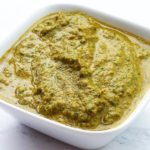
Chilli-Herb Sauce (Zhug)
In my version of this Yemeni hot and spicy condiment, green chillies, fresh coriander, parsley and mint plus a little tomato are combined with cumin, turmeric and more to create a dressing perfect for falafel, salads, roast veg, grilled meat or fish.
Ingredients
- 1 medium tomato deseeded
- 2-3 cloves garlic peeled
- 2-4 hot green chillies
- 1 small bunch coriander leaf
- 1 small bunch flat leaf parsley
- 1 small bunch mint, leaves only
- 2 tbsp olive oil
- 1 lemon, juice only
- 1 tsp sugar
- 1 pinch salt
- 0.5 tsp black pepper
- 1 tsp ground cumin
- 1 tsp paprika
- 0.5 tsp turmeric
- 0.5 tsp ground ginger
- 0.5 tsp ground coriander
Instructions
-
Put all the ingredients (but only HALF the lemon juice) in a blender and whizz until combined into a thick sauce.
-
Taste, add more seasoning, spices, sugar, lemon etc. until it's to your taste.
-
Serve with falafel, roast or grilled vegetables, meat or fish or use to flavour soups and stews.
-
Refrigerate if not using immediately. Should keep 3-4 days.


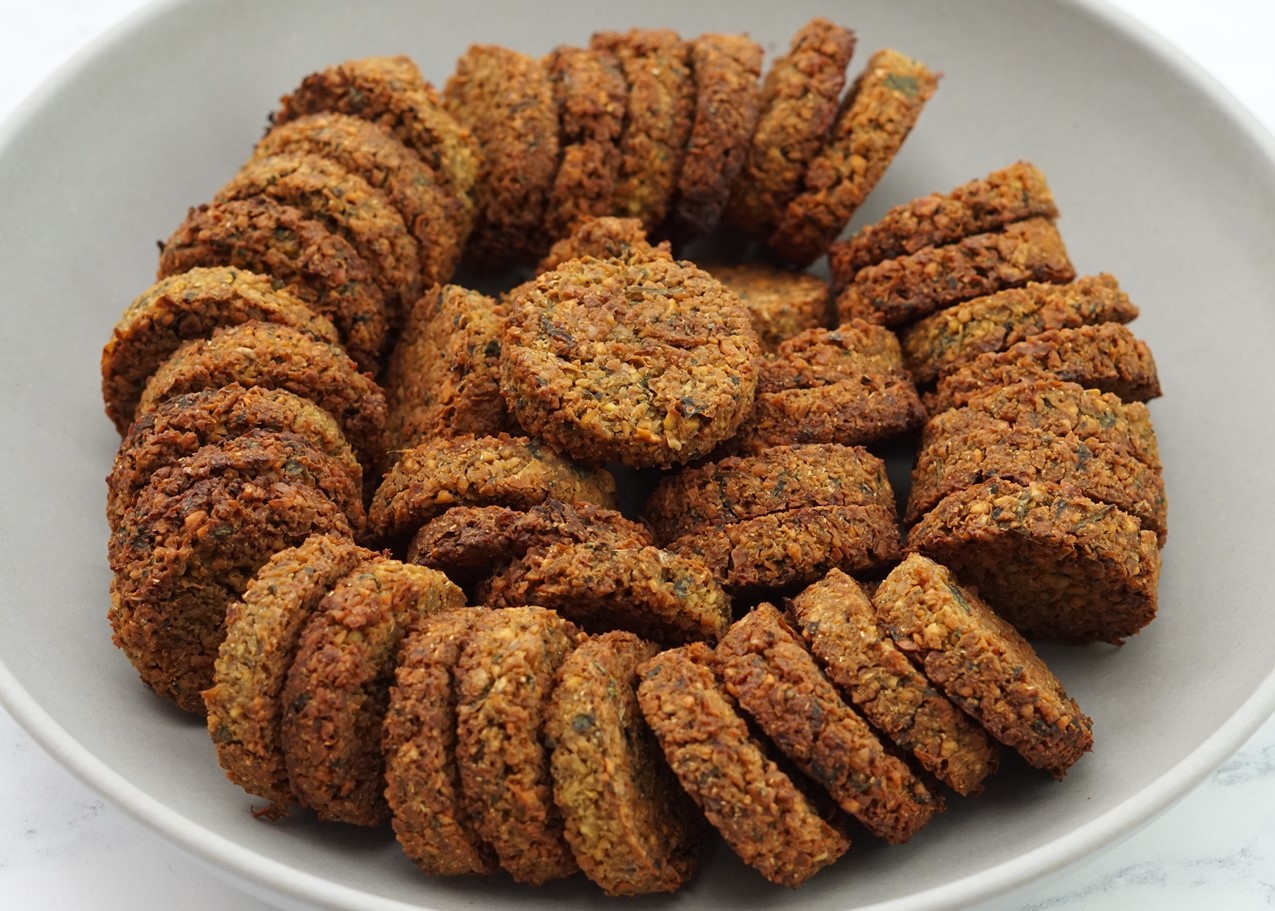
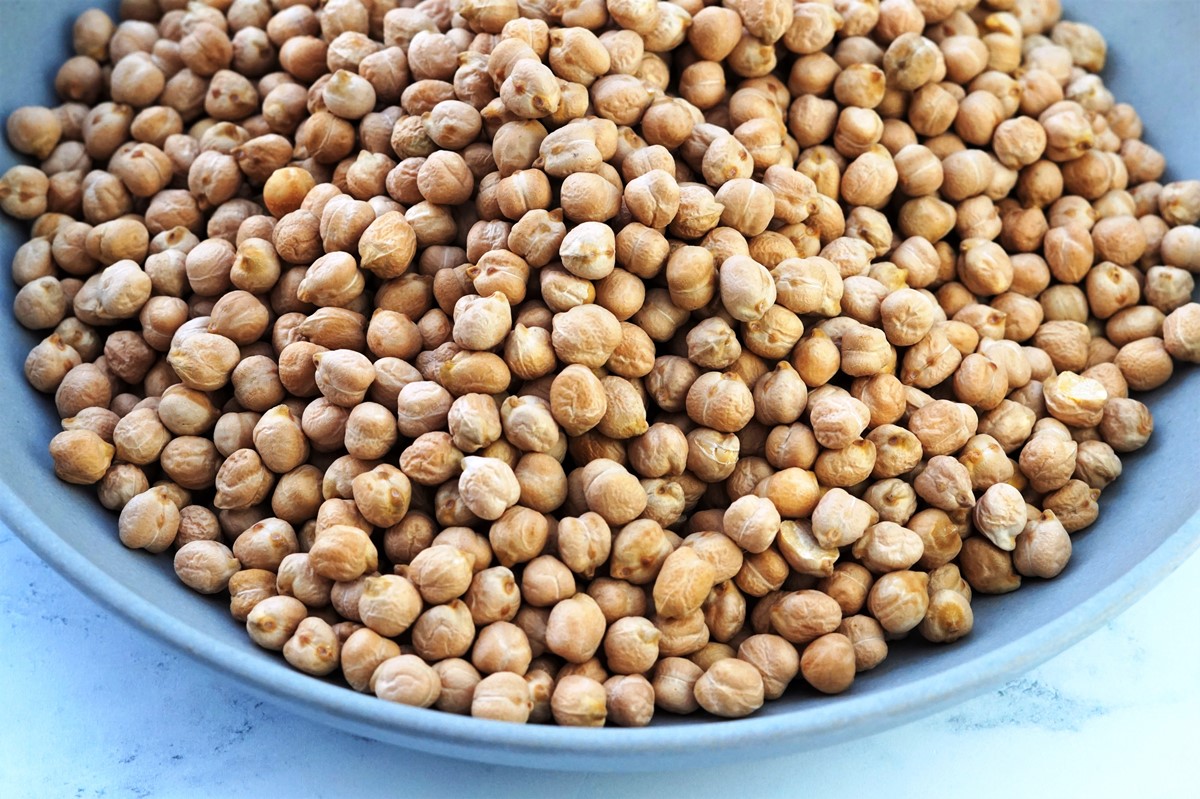
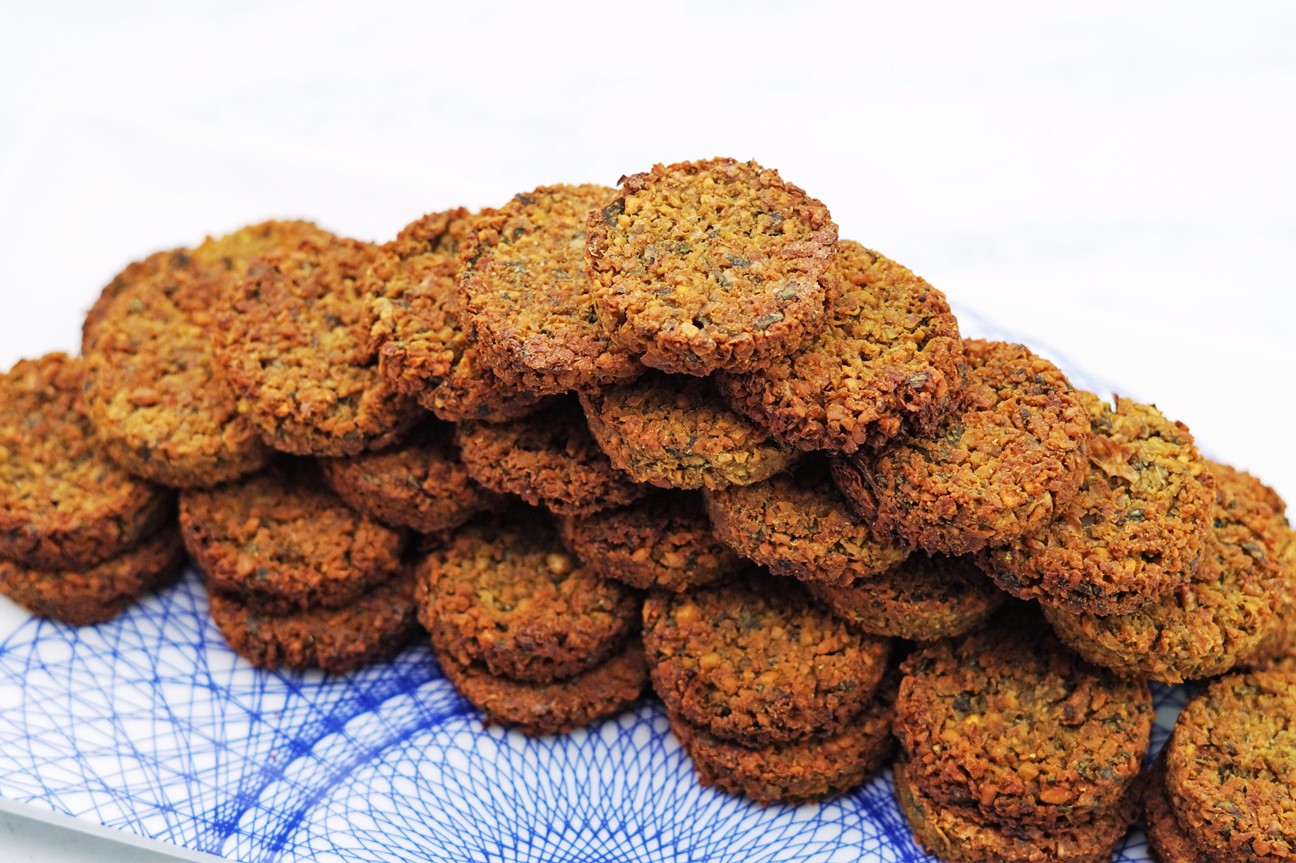
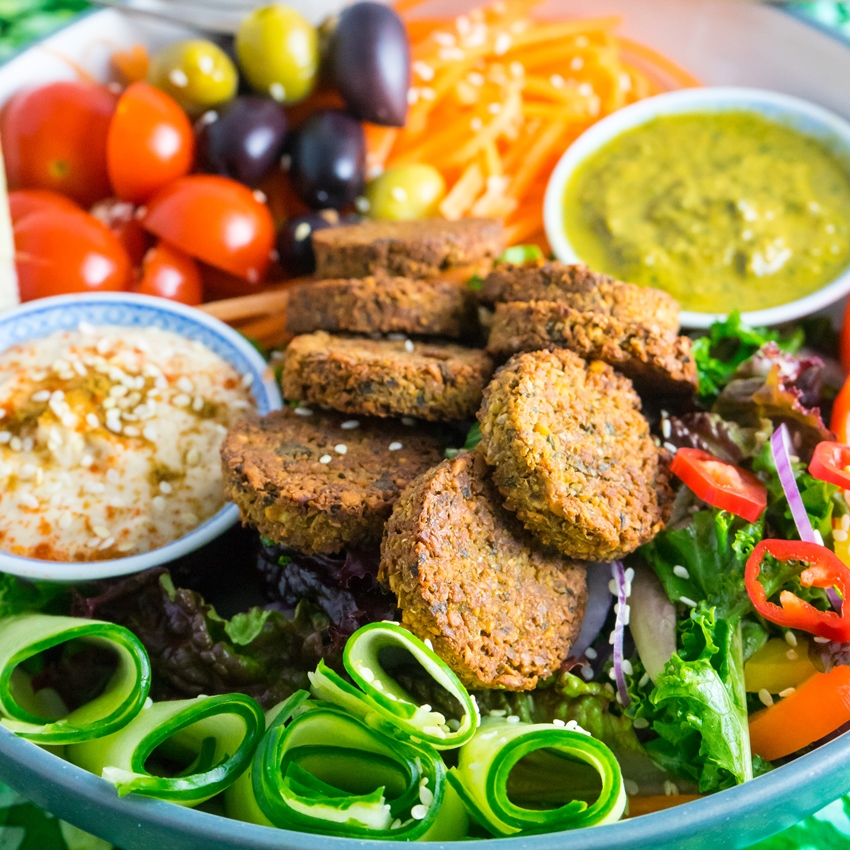
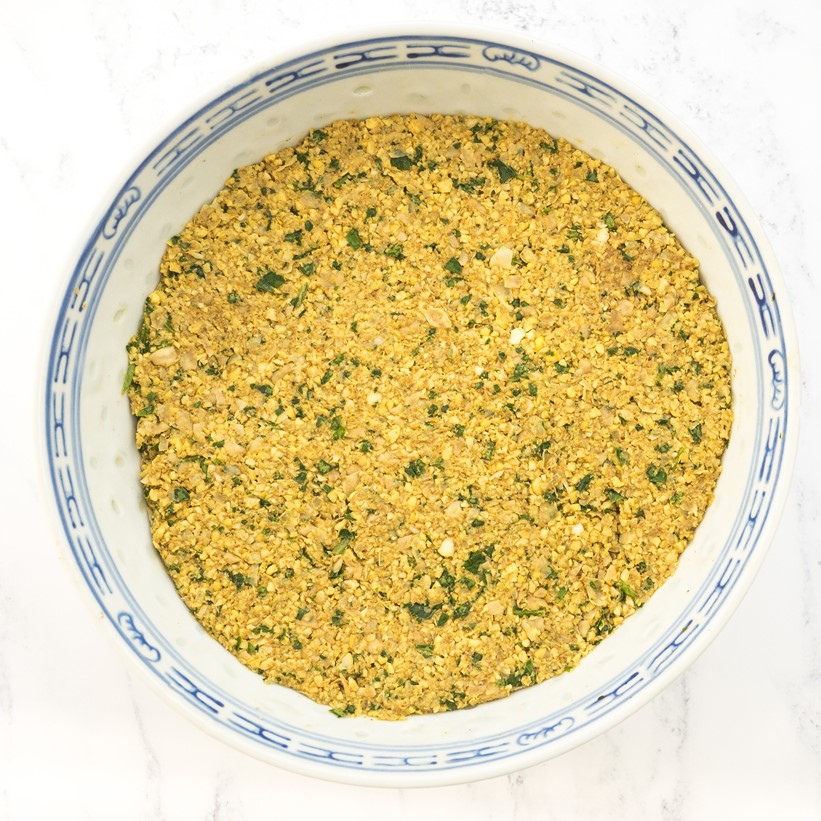
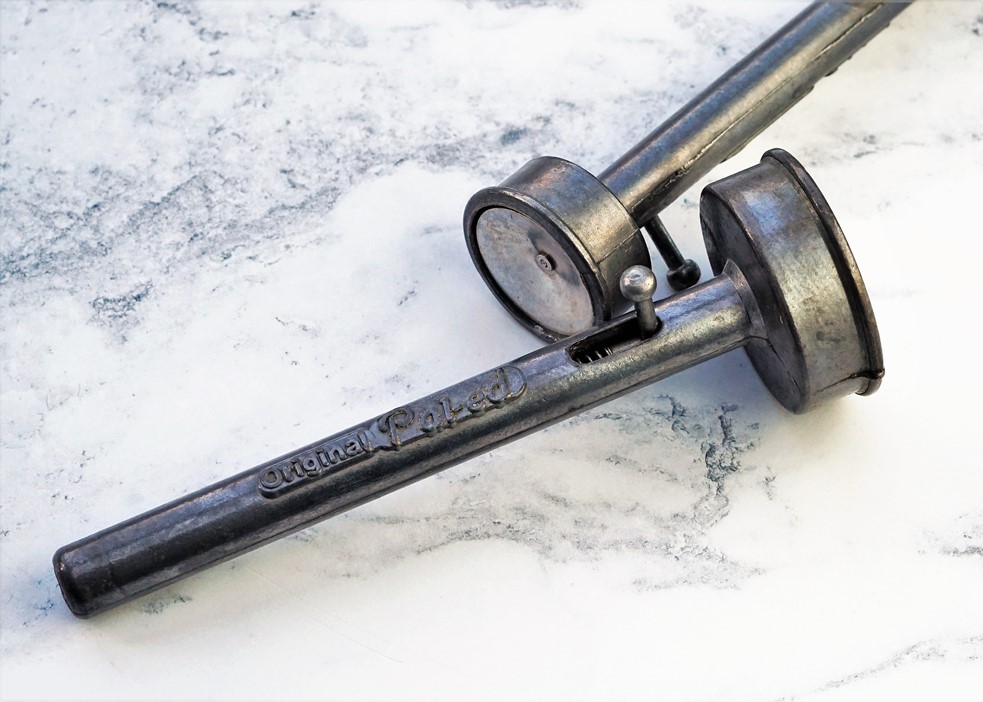
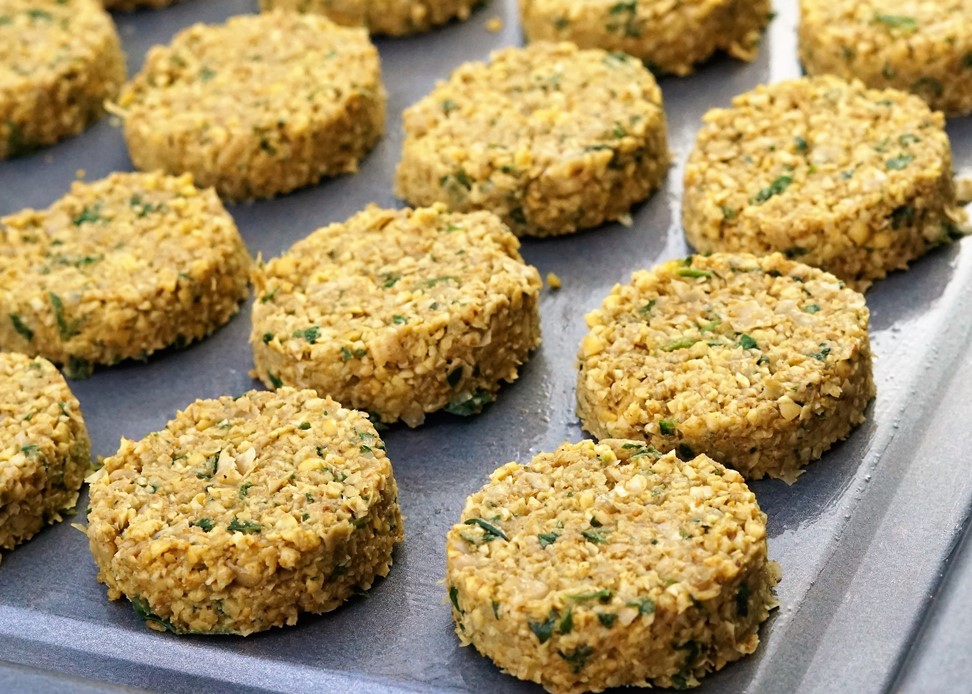
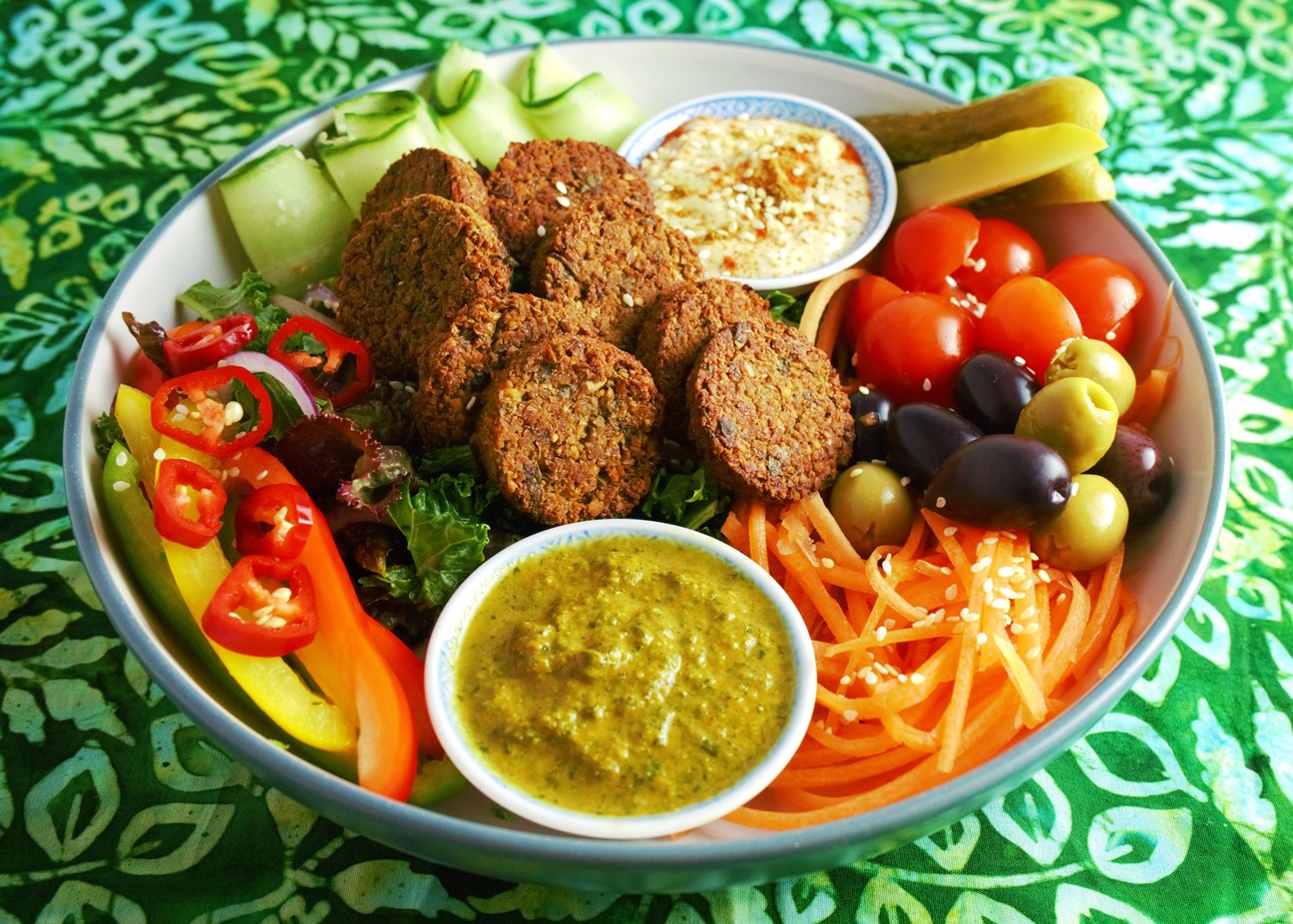

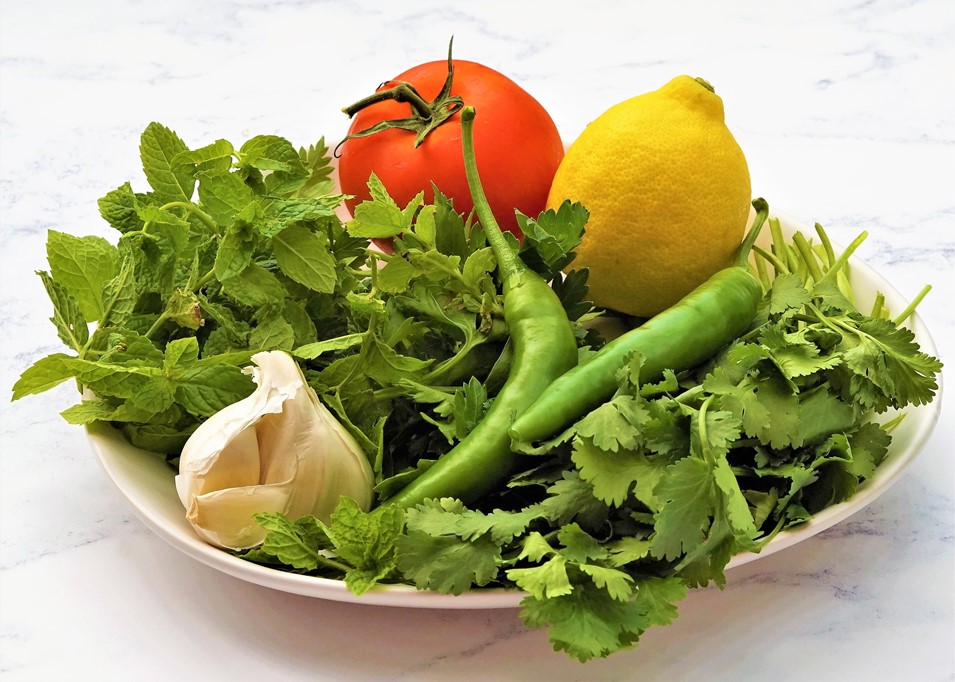
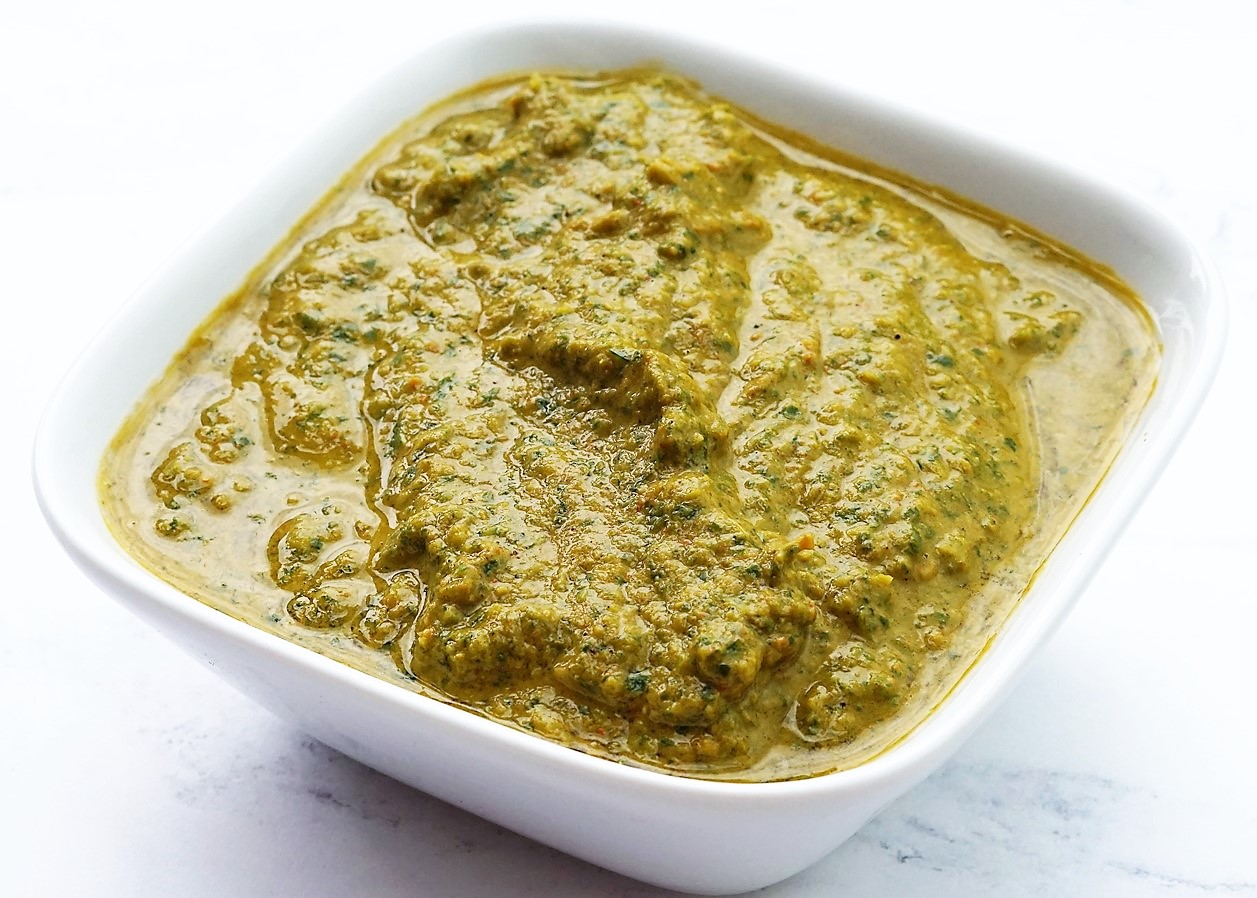
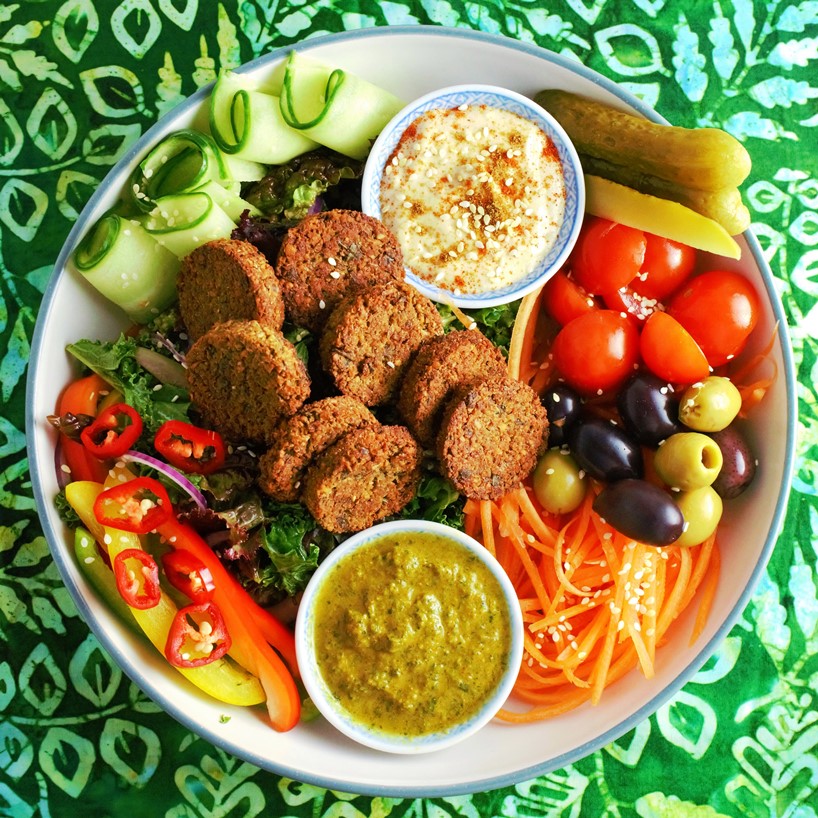
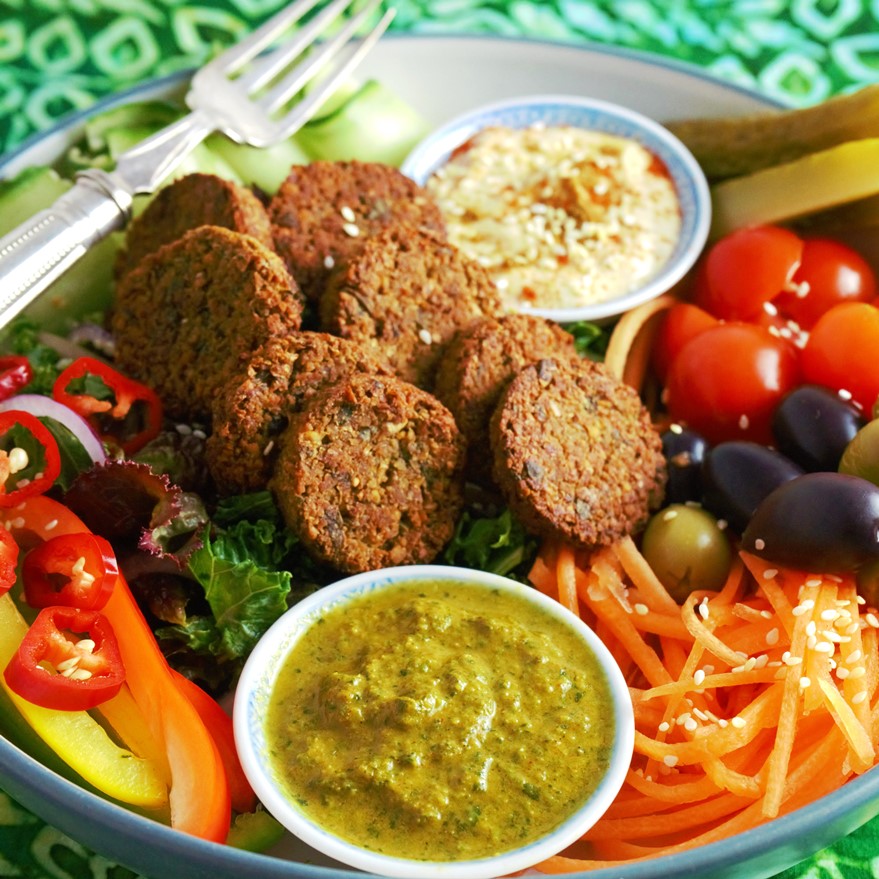
Great, foolproof recipe for falafel, with no falling apart! So much easier to bake them rather than deep fry.
Easy peasy chickpeasy!